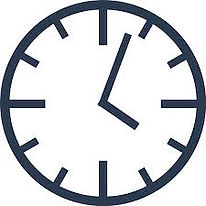
Trading Hours
Though the forex market runs twenty-four hours a day, there are still periods during each day when price action is more volatile than others. When trading currencies, these time frames are essential as they can define an intraday trade or present hazards for long-term traders entering and exiting the market.
There are three major financial centers around the world; and the activity in the currency market rises and falls when the markets in these regions are open for business. In fact, it makes sense that given the major financial institutions’ deals, speculators’ trades, and day-to-day business, transactions are performed during each center’s normal business day. As a result, there should be a greater level of price action in currency markets around the same time. The three major sessions for the global financial markets covers activity in the Asian, European, and North American markets, spanning most of the world’s time zones.
Forex market hours. When to trade and when not to
The Asian session is centered on the active Tokyo trading hours. Officially, this encompasses the times that the Tokyo Stock Exchange is open between 7:00 PM and 4:00 AM (EST), but it stands to reason that the currency market gets going an hour or two before and after the equity markets begin and end their day. As a financial center, the Tokyo session includes liquidity from not only Japan, but also China, Australia, New Zealand, India, Hong Kong, Singapore, and many other Asian-Pacific nations.
Europe is very dense in terms of both population and accumulated wealth. While the Eurozone is centered on its largest economy (Germany), Europe’s financial capital is London. Exchanges in the UK are officially open between 3:00 AM and 11:30 AM (EST); but, once again, the presence of traders in European countries east of London and the all-hours nature of the forex market expand this range in both directions by a few hours. When the London session is open, liquidity from Germany, France, Italy, Spain, the Netherlands, Switzerland, plus African and Middle Eastern nations, among others, are contributing to liquidity for the foreign exchange market.
Finally, the North American session ends the calendar day with a concentration of activity around the opening hours of the New York exchanges. New York’s exchanges are active between the 9:00 AM and 4:30 PM (EST), but many currency traders in the time zone will log on a few hours early to see how price action is developing before the official open of markets in the U.S., as well as to watch many U.S. economic releases, which usually come out at 8:30 AM (EST). In this time zone, liquidity from the U.S., Canada, Mexico, Brazil, and other South American countries is represented.
Session Key Market Time (EST) Time (GMT)
Asian Session Tokyo 19:00 PM – 04:00 AM 00:00 AM – 09:00 AM
European Session London 02:00 AM – 12:00 PM 07:00 AM – 17:00 PM
North American Session New York 08:00 AM – 16:00 PM 13:00 PM – 21:00 PM
The Average Hourly Reaction From EUR/USD
Generally, forex markets' volatility occurs during certain periods. Since the fluctuations are pretty consistent across the dollar-based majors, traders have used EUR/USD as a benchmark for the seven majors. The graph below shows the average range for each hour in a twenty-four-hour day. The results clearly reveal periods of heightened and reduced activity. In fact, the most lively time (9:00 AM EST or 2:00 PM GMT) for the markets sees more than three times the average range that the slowest period (5:00 PM EST or 10:00 PM GMT) does. Beyond this, we can make the observation that price action generally rises through the opening hours of each of the three major sessions. In fact, over the opening hour of the Asian session, the EUR/USD averages a 13-point range; at the beginning of the European session, the EUR/USD moves 23 points; and at the start of the North American session, price action tops 31 points.
What are the most suitable Forex trading hours and why?
Usually, the best time to enter Forex markets is when large volumes of currencies are being traded. At those hours, traders can take full advantage of Forex benefits. Since the Forex market trades 24 hours a day, the best time to enter is when several countries are trading at the same time. In each time zone across the world, Forex markets operate from 8am to 4pm. So, to take advantage of heavy trading volume, its worthwhile to determine when Forex market hours in different countries overlap. The more countries actively trading, the larger the trading volume and the bigger the pip movements. When currencies are the most active, that’s when traders have a better chance of making a profit. Slow markets offer little chance of profit and therefore Forex traders usually stay away.

